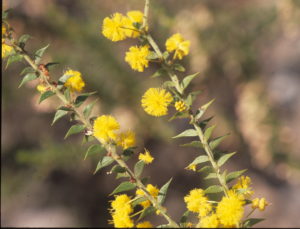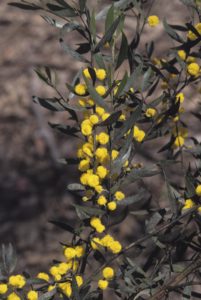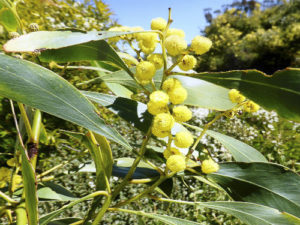
Alan Fairley explains why Wattle Day is 1 September. This article first appeared in Doryanthes, the newsletter of the Oatley Flora and Fauna Society, and is reproduced with Alan’s permission.
Wattle Day in NSW
Anyone who went to primary school in NSW in the 1950s or 1960s will remember Wattle Day. It was held on 1 August. Students were encouraged to research wattles or native plants, wear sprigs of wattle, play wattle games, write poems or stories with wattle as a theme or were even taken on short walks through local bushland in search of different wattles. And 1 August was an obvious day for such activity, as the majority of wattles in the Sydney area are in flower around that date. So, why is Wattle Day now celebrated on 1 September when most of Sydney’s wattles have finished flowering?
Before Federation and up to World War 1

Recognition of the many wattle species (750+) as a distinctive feature of the Australian flora and an inspiring focus for spring festivals was evident in the Australian colonies well before Federation in 1901. The earliest record is from Tasmania in 1838 where it became customary to wear a sprig of the wattle (Acacia mearnsii) to celebrate the Hobart Regatta and the European discovery of the island. As the 19th century progressed, interest grew in finding a flower which could be associated with Australia and reflect the growing patriotism as the states progressed towards Federation. This led in 1889 to the short-lived Wattle Blossom League formed by the Adelaide branch of the Australian Natives’ Association. This was followed in 1899 by the Wattle Club in Victoria, whose founder, Archibald James Campbell, would lead a trip on the first day of September into the countryside to look for wattle. He suggested a national Wattle Day in a speech in September 1908.
Not to be outdone by Melbourne, botanists such as J. H. Maiden of Sydney’s Botanic Gardens called a public meeting in August 1909 to support a Wattle Day and to set aside a day on which Australia’s national flower might be worn and displayed. By 1910, branches of a Wattle Day League were active in Sydney, Melbourne and Adelaide. Festivities were held each year on 1 September, marked by bunches of wattle and planting of wattle trees in schools and parks. 1913 saw the incorporation of wattle into the design of the Commonwealth Coat of Arms.
Fundraising for World War 1
Wattle Day festivities intensified during World War 1 when wattle sprigs were widely used as a symbol of national patriotism. Sales of wattle badges and blossoms by organisations like Red Cross were a way of helping soldiers on the war front. In Sydney, demand for bunches of wattle were so great that demand could not be met on 1 September, so in 1916 Wattle Day celebrations were put forward to 1 August.
Thus began the divide which continued until 1992. Interest in Wattle Day gradually declined in NSW but in Victoria the Wattle Day League lasted until the 1960s, continuing its push for celebrations on 1 September, which happily coincided with the first day of Spring.
Renewed interest in the 1980s

In the 1980s there was a renewal of interest in Wattle Day in NSW when Maria Hitchcock and the Australian Plants Society campaigned for a national wattle day. The issue was resolved from above when on 23 June 1992 the Governor-General Bill Hayden declared that 1 September should be observed as National Wattle Day in all Australian States. Prior to this, as part of Australia’s Bicentennial Celebrations in August 1988, the then Governor-General, Sir Ninian Stephen, proclaimed Acacia pycnantha (Golden Wattle) to be Australia’s national floral symbol.
These two proclamations from Canberra were a double blow to NSW (as well as Queensland and Northern Territory). Not only was Wattle Day to be celebrated on a day when few wattles were in flower, but the chosen national wattle does not even occur around Sydney or further north, being distributed only in southern NSW, Victoria, Tasmania, and around Adelaide and Perth. So we have a national flower which is not nationally distributed and are asked to accept a national celebration in the wrong month of the year. Fortunately the genus Acacia (wattle) is found nationwide and the many species are truly iconic Australian flora which can be celebrated at any time of the year.
